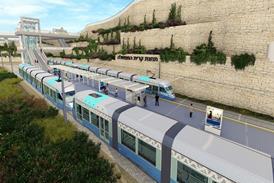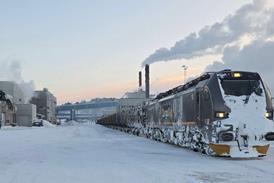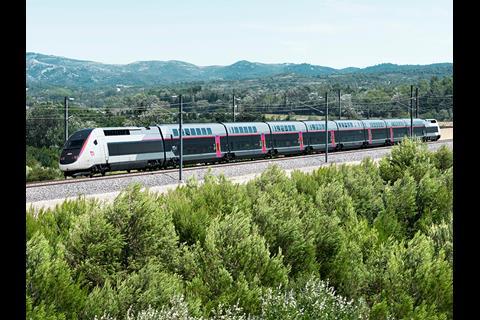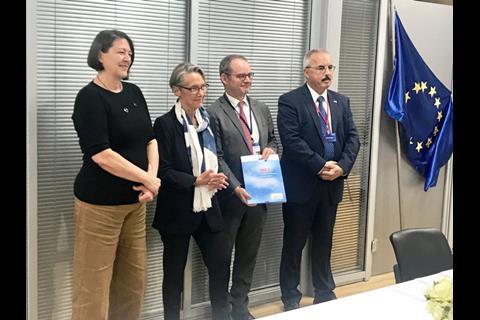FRANCE: The European Union is to provide €117m from the Connecting Europe Facility to support the installation of ETCS Level 2 on LGV Sud-Est between Paris and Lyon, under a financing agreement signed on April 25 at the TEN-T Days conference in Ljubljana, attended by European Transport Commissioner Violeta Bulc and Transport Minister Elisabeth Borne.
According to SNCF, LGV Sud-Est is now the busiest high speed line in Europe, used by an average of 240 trains a day. In 2017 it carried 44·4 million passengers, representing one-third of all TGV ridership. Replacing the analogue TVM300 signalling system, which uses coded track circuits, by ETCS Level 2 and GSM-R is expected to increase the capacity of the route from 13 to 16 trains/h at peak times.
The work forms part of SNCF Réseau’s programme to update the 37-year-old line, which has a total cost of €607m at 2016 prices. Of this, the installation of ERTMS accounts for €130m, while €340m will fund the replacement of interlockings and traffic control systems, and €60m will be allocated to strengthening the traction power supplies to accommodate more trains.
Many of the original interlockings dating from 1981-83 will be replaced, and a single traffic management and control centre will replacing the current facilities covering the Greater Paris, LGV PSE and Lyon areas. The infrastructure manager anticipates that this consolidation will improve performance and productivity while increasing responsiveness to any incidents.
The ETCS installation will adopt the latest Baseline 3 specifications and GPRS data exchange, allowing headways and speeds to be managed in real time, with continuous updating of movement authorities based on train characteristics including weight and braking rates.
Work is due to get underway in 2019, with the tendering of the ETCS supply contract and the start of the power supply upgrading. Interlocking replacement begins in 2021, with all installation to be completed by the end of 2024 to permit commissioning during 2025.
‘The signing of this agreement symbolises SNCF Réseau's shift towards a high-performance, high speed network, which will allow us to accommodate more trains and therefore more passengers with greater consistency and performance’, said SNCF Réseau President Patrick Jeantet.
As well as supporting interoperability, the EU contribution is intended to recognise the environmental benefits of modal shift, as making rail services more attractive is expected to take traffic from road and air with a concomitant reduction in greenhouse gas emissions.


















